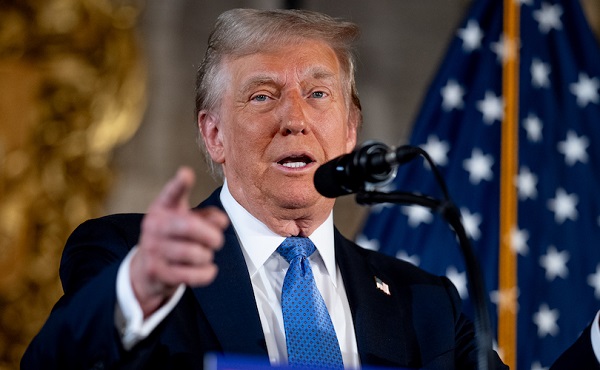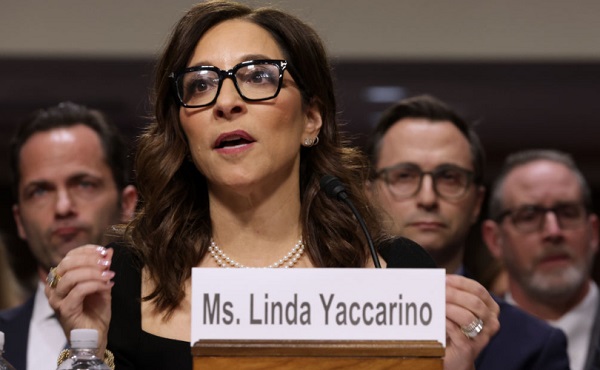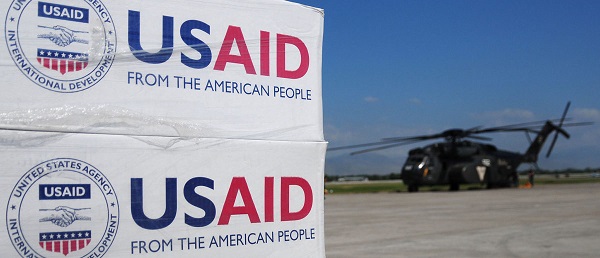Business
Federal government increased number of public service employees by more than 40%

From the Fraser Institute
By Jake Fuss and Grady Munro
“the size of the federal public service reached 274,219 employees in 2022/23—an increase of 40.4 per cent since 2014/15”
Over the last eight years the Trudeau government has expanded the size of the federal public service to ensure it plays a more active role in the Canadian economy. However, there’s little evidence that this bigger government has made Canadians better off.
According to the Public Service Commission of Canada, the size of the federal public service reached 274,219 employees in 2022/23—an increase of 40.4 per cent since 2014/15. And according to data from the Parliamentary Budget Officer, total compensation for federal bureaucrats (adjusted for inflation) increased by nearly 37 per cent between 2015/16 and 2021/22.
This is occurring even as government workers in Canada already enjoy a substantial wage and benefit premium compared to comparable workers in the private sector. According to a recent study published by the Fraser Institute, in 2021 (the latest year of comparable data) government workers at all levels (federal, provincial and local) received wages that were 8.5 per cent higher, on average, than Canadians employed in the private sector. (The study controls for factors such as gender, age, education, tenure and industry to provide an “apples to apples” comparison among workers.)
But higher compensation and an increasing size of the federal public service have not provided better access to government programs and services or translated into tangible economic results for Canadians.
A recent poll found that only 16 per cent of Canadians believe they get good or great value from the services they receive from governments such as health care, education, police, roads and national defence. Nearly half (44 per cent) of Canadians believed they receive poor or very poor value from the services they receive.
Moreover, living standards have only improved marginally in Canada since 2015. Gross domestic product (GDP) per person—a broad measure of living standards—has grown by a meagre 5.1 per cent (inflation-adjusted) over the last eight years. By comparison, Americans have seen their living standards grow by nearly three times as much over the same timeframe.
To put this into further perspective, total compensation and employment for federal bureaucrats are increasing much faster than living standards for Canadians.
These results are not surprising. Bigger governments are not necessarily better than smaller ones. Empirical economic research suggests that economic growth is maximized when government spending ranges between 24 per cent and 32 per cent of the size of the national economy. When government spending exceeds this optimal range, government impedes both economic growth and improvements in living standards. Unfortunately, Canada’s size of government (federal, provincial and local) was far beyond the optimal level at 40.5 per cent of GDP in 2022.
Since 2015, the Trudeau government has added more administrators and managers to the federal public service and significantly increased spending—while failing to help raise the living standards of Canadians. Entrusting bureaucrats to pick winners and losers by subsidizing certain industries instead of others has not been a recipe for economic success. Instead, Ottawa appears to be competing with the private sector for skilled workers and inhibiting the national economy in the process.
Canada needs a leaner and more efficient federal government that focuses only on its core functions. Bigger government hasn’t been good for Canadians, it’s only been good for government workers.
Authors:
Business
Trump confirms 35% tariff on Canada, warns more could come

Quick Hit:
President Trump on Thursday confirmed a sweeping new 35% tariff on Canadian imports starting August 1, citing Canada’s failure to curb fentanyl trafficking and retaliatory trade actions.
Key Details:
- In a letter to Canadian Prime Minister Mark Carney, Trump said the new 35% levy is in response to Canada’s “financial retaliation” and its inability to stop fentanyl from reaching the U.S.
- Trump emphasized that Canadian businesses that relocate manufacturing to the U.S. will be exempt and promised expedited approvals for such moves.
- The administration has already notified 23 countries of impending tariffs following the expiration of a 90-day negotiation window under Trump’s “Liberation Day” trade policy.
Diving Deeper:
President Trump escalated his tariff strategy on Thursday, formally announcing a 35% duty on all Canadian imports effective August 1. The move follows what Trump described as a breakdown in trade cooperation and a failure by Canada to address its role in the U.S. fentanyl crisis.
“It is a Great Honor for me to send you this letter in that it demonstrates the strength and commitment of our Trading Relationship,” Trump wrote to Prime Minister Mark Carney. He added that the tariff response comes after Canada “financially retaliated” against the U.S. rather than working to resolve the flow of fentanyl across the northern border.
Trump’s letter made clear the tariff will apply broadly, separate from any existing sector-specific levies, and included a warning that “goods transshipped to evade this higher Tariff will be subject to that higher Tariff.” The president also hinted that further retaliation from Canada could push rates even higher.
However, Trump left the door open for possible revisions. “If Canada works with me to stop the flow of Fentanyl, we will, perhaps, consider an adjustment to this letter,” he said, adding that tariffs “may be modified, upward or downward, depending on our relationship.”
Canadian companies that move operations to the U.S. would be exempt, Trump said, noting his administration “will do everything possible to get approvals quickly, professionally, and routinely — In other words, in a matter of weeks.”
The U.S. traded over $762 billion in goods with Canada in 2024, with a trade deficit of $63.3 billion, a figure Trump called a “major threat” to both the economy and national security.
Speaking with NBC News on Thursday, Trump suggested even broader tariff hikes are coming, floating the idea of a 15% or 20% blanket rate on all imports. “We’re just going to say all of the remaining countries are going to pay,” he told Meet the Press moderator Kristen Welker, adding that “the tariffs have been very well-received” and noting that the stock market had hit new highs that day.
The Canadian announcement is part of a broader global tariff rollout. In recent days, Trump has notified at least 23 countries of new levies and revealed a separate 50% tariff on copper imports.
“Not everybody has to get a letter,” Trump said when asked if other leaders would be formally notified. “You know that. We’re just setting our tariffs.”
Business
Trump slaps Brazil with tariffs over social media censorship

From LifeSiteNews
By Dan Frieth
In his letter dated July 9, 2025, addressed to President Luiz Inácio Lula da Silva, Trump ties new U.S. trade measures directly to Brazilian censorship.
U.S. President Donald Trump has launched a fierce rebuke of Brazil’s moves to silence American-run social media platforms, particularly Rumble and X.
In his letter dated July 9, 2025, addressed to President Luiz Inácio Lula da Silva, Trump ties new U.S. trade measures directly to Brazilian censorship.
He calls attention to “SECRET and UNLAWFUL Censorship Orders to U.S. Social Media platforms,” pointing out that Brazil’s Supreme Court has been “threatening them with Millions of Dollars in Fines and Eviction from the Brazilian Social Media market.”


Trump warns that these actions are “due in part to Brazil’s insidious attacks on Free Elections, and the fundamental Free Speech Rights of Americans,” and states: “starting on August 1, 2025, we will charge Brazil a Tariff of 50% on any and all Brazilian products sent into the United States, separate from all Sectoral Tariffs.” He also adds that “Goods transshipped to evade this 50% Tariff will be subject to that higher Tariff.”
Brazil’s crackdown has targeted Rumble after it refused to comply with orders to block the account of Allan dos Santos, a Brazilian streamer living in the United States.
On February 21, 2025, Justice Alexandre de Moraes ordered Rumble’s suspension for non‑compliance, saying it failed “to comply with court orders.”
Earlier, from August to October 2024, Moraes had similarly ordered a nationwide block on X.
The court directed ISPs to suspend access and imposed fines after the platform refused to designate a legal representative and remove certain accounts.
Elon Musk responded: “Free speech is the bedrock of democracy and an unelected pseudo‑judge in Brazil is destroying it for political purposes.”
By linking censorship actions, particularly those targeting Rumble and X, to U.S. trade policy, Trump’s letter asserts that Brazil’s judiciary has moved into the arena of foreign policy and economic consequences.
The tariffs, he makes clear, are meant, at least in part, as a response to Brazil’s suppression of American free speech.
Trump’s decision to impose tariffs on Brazil for censoring American platforms may also serve as a clear signal to the European Union, which is advancing similar regulatory efforts under the guise of “disinformation” and “online safety.”
With the EU’s Digital Services Act and proposed “hate speech” legislation expanding government authority over content moderation, American companies face mounting pressure to comply with vague and sweeping takedown demands.
By framing censorship as a violation of U.S. free speech rights and linking it to trade consequences, Trump is effectively warning that any foreign attempt to suppress American voices or platforms could trigger similar economic retaliation.
Reprinted with permission from Reclaim The Net.
-

 International2 days ago
International2 days agoSecret Service suspends six agents nearly a year after Trump assassination attempt
-

 Bruce Dowbiggin1 day ago
Bruce Dowbiggin1 day agoThe Covid 19 Disaster: When Do We Get The Apologies?
-

 Crime19 hours ago
Crime19 hours agoSweeping Boston Indictment Points to Vast Chinese Narco-Smuggling and Illegal Alien Labor Plot via Mexican Border
-

 Alberta1 day ago
Alberta1 day agoAlberta school boards required to meet new standards for school library materials with regard to sexual content
-

 Business2 days ago
Business2 days agoWEF-linked Linda Yaccarino to step down as CEO of X
-

 Automotive2 days ago
Automotive2 days agoAmerica’s EV Industry Must Now Compete On A Level Playing Field
-

 Environment20 hours ago
Environment20 hours agoEPA releases report on chemtrails, climate manipulation
-

 Business2 days ago
Business2 days ago‘Experts’ Warned Free Markets Would Ruin Argentina — Looks Like They Were Dead Wrong





